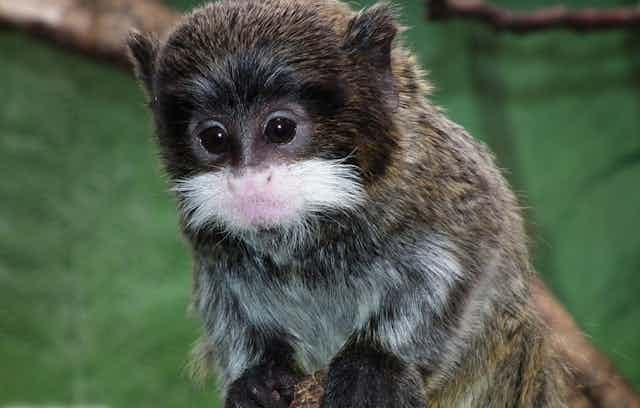How did you get to work today? I walked to the station, caught a train, then walked to a bus stop and hopped on the 891 express.
All this time, while I was travelling, I moved in space – in fact a lot of space – what some call the Sydney Basin. From the window of the train I saw the landscape change from high wet forest to low and dry woodland plains. Without knowing it, I and many of my fellow passengers were unwitting biogeographers.
Biogeographers study the distribution of organisms from two very different perspectives. Biologists – like taxonomists, palaeobiologists and geneticists – study how organisms move within space, while geographers study how the landscape affects the same distributions.
But this was not true 200 years ago, when naturalists first started to examine animal and plant distributions.
Geography has a multifaceted history that involves many prominent naturalists and philosophers of the 18th and 19th centuries. What intrigued naturalists such as Eberhard Zimmermann was the worldwide distribution of quadrupeds.
Did these distributions change over time? Fossils tell us that many of the regions today were very different in the past. Impossible as it seemed for early plant and animal geographers, Earth had changed; therefore organisms in the same geographical areas changed too.
This was the birth of plant and animal geography. But how did these organisms get there?
Unlike biogeography today, few of the early naturalists – such as Zimmermann – really queried individual plant and animal dispersal. For him, distributions such as the discovery of monkeys in the New World, were simply explained as creations unique to an area.
Most 18th century thinkers looked to the French naturalist and author Georges Buffon, who believed animals (and plants) could change temperament and form according to the environment they lived in.
According to Buffon, New World monkeys for instance, got to the Americas via the Arctic. But geography was not about explaining individual species histories, rather the areas that created them.
In any case, what evidence was there for the long journey from the Old to the New World? Untestable hypotheses about dispersal were overshadowed by more intriguing and answerable questions about geography.
The Prussian geographer and scientific explorer Alexander von Humboldt took geography to its limits by looking at all aspects of a landscape, describing the temperature, humidity, elevation and air pressure.
Factors such as elevation, thought Humboldt, were the key to explaining the distribution of organisms. After all, an alpine plant is only found in alpine environments. Change the environment and you change the plant. Geography was literally the key to understanding not only distribution but also diversity.
With greater emphasis on geography, early 19th century plant and animal geographers started to describe the world’s biogeographical regions, the same we use today, such as neotropical and boreal.
Regions, like organisms, had characteristics, except those characteristics were temperature, elevation, soils and, of course, the plants and animals that were dependent on them.
Plant and animal geography was about measuring these characteristics and finding ways to compare regions and the organisms that live there.
The geographical nature of biogeography dominated much of early 19th century plant and animal geography, until biologists started to embrace their new science and focus on endemism (being unique to a geographic location) and evolution.
Rather than looking at the defining physical characteristics of an area, biologists now looked for the histories of individual species and the physiological and evolutionary mechanisms responsible for dispersal.
Biogeographical maps changed from regionalisations into roadmaps, and geographical regions into vegetations. Ecology and evolutionary biology were the driving force behind the new biogeography at the beginning of the 20th century.
So what happened to the “geography” in biogeography?
There are still many scientists who study the nature of landscapes and how they shape plant and animal distributions. In fact, the discipline of discovering new biogeographical areas and describing their characteristics is blossoming.
Presently new biogeographical regions have been proposed for Antarctica and the deep sea, possibly the largest and most under-explored parts of our planet. Microbiologists are also looking at the distributions of bacteria.
Once believed to have randomly dispersed everywhere, many bacteria are highly endemic and are only found in certain types of environments, such as toxic hot springs and the human digestive tract.
Big or small, biogeographical areas can be studied in order to gain insight into the organisms that live there.
Biogeography, as the study of place, not only links us back to the early plant and animal geographers of the past, but incorporates our observations of organisms and their distributions within space.
Looking at what makes up an area, its history and how it bounds the distributions of many different organisms, is the first step toward understanding our natural world in its entirety.

